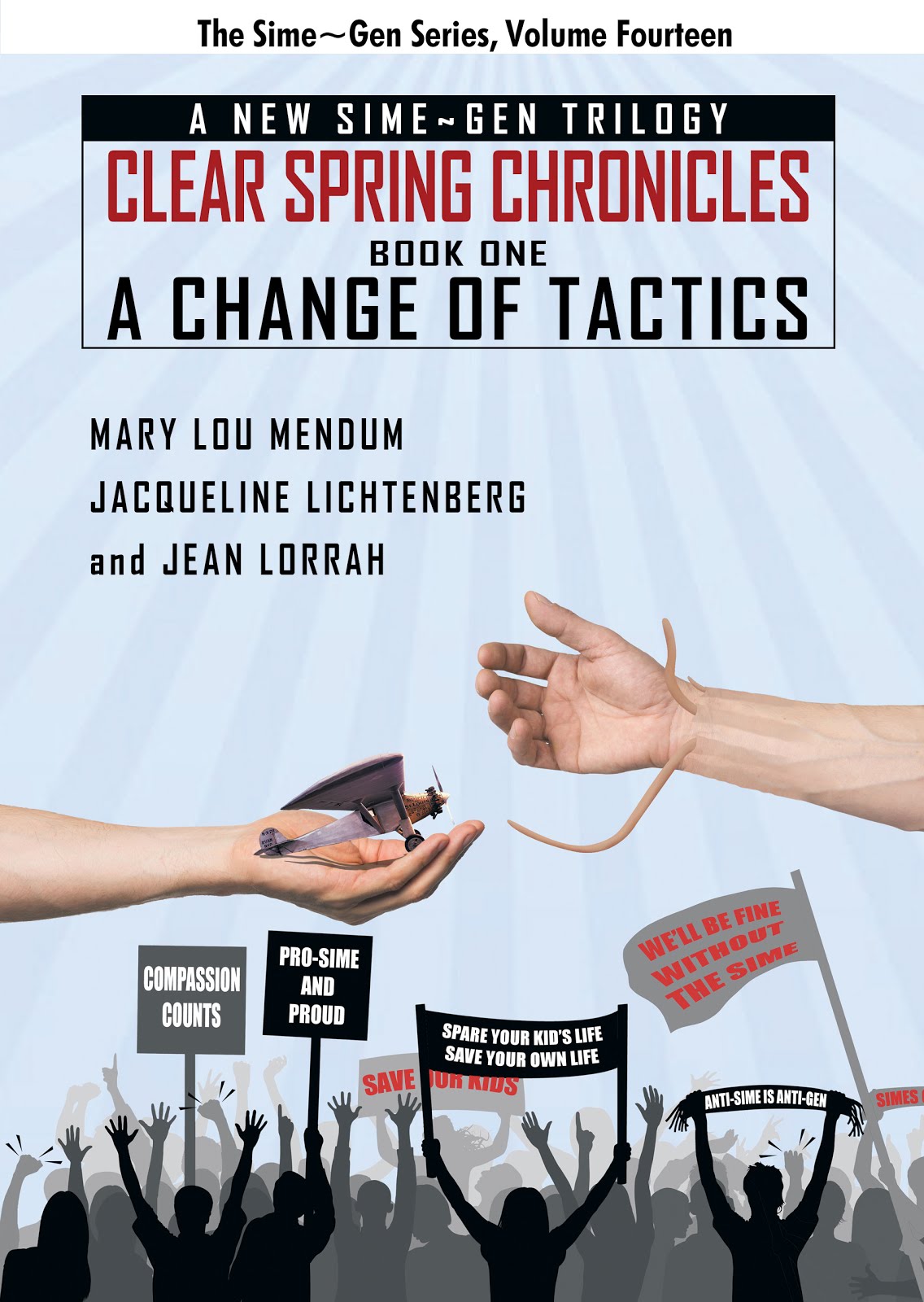This is an excerpt from my post on aliendjinnromances.blogspot.com on Tuesday Feb 3, 2009:
Expletive-Deleted & Tender Romance
"But First! -- Linnea stole my thunder by quoting me and the point I'm making in this post in her post that comes right before this one.
http://aliendjinnromances.blogspot.com/2009/02/you-dont-understand-she-shouted-angrily.html
Linnea said: Real people ramble on with loads of 'umms' and 'yunnos' and 'dudes' and 'uhs.' Characters should keep those kinds of things to a bare minimum. Good dialogue goes for the vital organs, which in this case should be the reader's heart and brain. In that way, it's not unlike poetry or song writing. Good dialogue has impact ...
Linnea goes on to point out how handy a good argument is for sprinkling in crushed-expository-lumps so the reader doesn't notice them.
Anger is a good special case of the general key to great DIALOGUE.
ALL DIALOGUE IS CONFLICT.
That's a principle. Dialogue is generated by PLOT, and the basis is conflict. Every scene must have "rising action" (the tension, anticipation of plot-movement, and the movement of the plot must graph from a low to end on a HIGH NOTE). That's a stageplay writing principle that works on TV and in books.
Even sex scene dialogue is generated by conflict that is resolved at the climax.
If the scene does not encapsulate this principle -- conflict/ resolution -- then cut it. All dialogue must carry the conflict. Anything characters say to each other that isn't CONFLICT gets cut, summarized, happens off stage, is overheard in fragments, or referred to in another confrontation.
One thing people revert to when inarticulate with rage (angry enough to let you insert backstory) is invective, and other words that don't say anything but take up precious space in your story.
So today I want to discuss the interjection and expletive in dialogue, whereas in my post -- http://aliendjinnromances.blogspot.com/2009/01/verisimilitude-vs-reality.html
-- I was addressing the general problem of creating the illusion of reality, using dialogue as an example because I assumed everyone reading this blog had mastered dialogue.
The principles I discussed in "Versimilitude vs Reality" actually apply neatly to Kimber An's comment (on Linnea's post on dialogue) that Kimber An sees IMAGES and can't do the description well, but has no trouble with dialogue. And I answered in the comments section that when you can't write the description, the problem is in the dialogue. When the dialogue FAILS, the description can't materialize.
That's extremely hard for anyone to grasp who hasn't taught writing, hands-on, with beginner's manuscripts. Most editors can't do this either. But when a story falls off the conflict line at the half-way point, the problem is not at the half-way point, but probably on PAGE ONE -- or possibly PAGE 5. When an ENDING fails to meld properly with the final climax, the problem is very likely at the 1/4 point, or possibly the 1/2 point.
It's kind of like chiropractic medicine. The patient comes in and says "My knee hurts." -- and the doctor pokes and says, "Ah, your neck is out."
A body is an organic whole, a thing of a single piece. The location of the cause and the symptom may not coincide.
Likewise a story is also a work of art (humans are G-d's artwork), and an organic WHOLE, much greater than the sum of the parts we've been discussing. Thus if a problem surfaces at one point, the cause is likely at some other point -- or in some other technique that's not in the writer's tool box.
EXERCISE: Write a radio script -- or a vignette to play out on a limbo set (against total blackness). Or two prisoners in adjacent dungeon cells. Absolutely not one word of anything but dialogue. If you want my analysis of this exercise, post it to http://editingcircle.blogspot.com/ Readers should read this dialogue and post on editingcircle.blogspot.com what the dialogue MADE THEM VISUALIZE.
Click comments below this post and post your exercise. (HINT: write it in a text editor like notepad, turn off wordwrap, then copy and paste it into the comment box.)
Jacqueline Lichtenberg
http://www.simegen.com/jl/
Tuesday, February 3, 2009
Subscribe to:
Posts (Atom)















